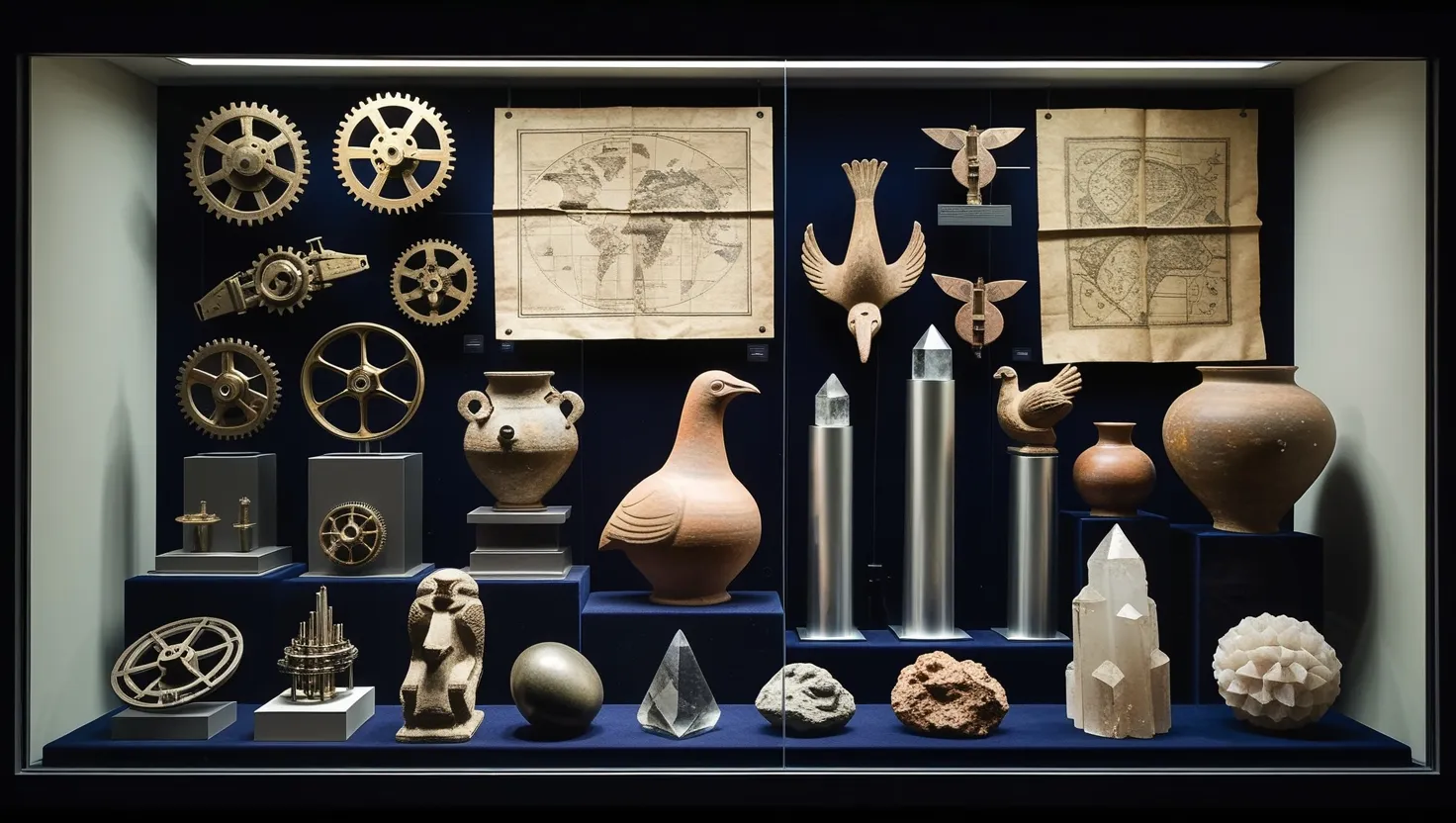The Baghdad Battery: Ancient Electricity or Modern Misinterpretation?
Picture this: it’s 1936, and construction workers are digging near Baghdad when they stumble upon something strange. Clay jars, roughly the size of your fist, filled with copper tubes and iron rods. These objects sat undisturbed for nearly 2,000 years, waiting for someone to ask the question that would divide historians and scientists for decades: could these simple containers have powered ancient civilizations?
My first thought when learning about the Baghdad Battery was straightforward—this seemed like the kind of discovery that changes everything. Yet the more I researched, the more I realized this artifact represents something far more complex than a simple “yes” or “no.” It’s a story about how we interpret the past, what we’re willing to believe, and how scientific possibility sometimes clashes with historical convention.
In 1936, German archaeologist Wilhelm König examined these peculiar objects discovered at Khujut Rabu, near Baghdad.[1][2] He noticed something peculiar about their construction. Each consisted of a ceramic pot approximately 140 millimeters tall, a rolled copper sheet formed into a cylinder, and an iron rod positioned centrally inside the copper tube. These components were held together with bitumen, a natural tar-like substance.[1][2] König had an unconventional idea: what if this was a galvanic cell—an ancient battery?
To test his theory, König and others filled replicas with acidic substances like vinegar or lemon juice. The results were striking. The device produced a small but measurable electrical current.[3][4] When multiple jars were connected in series, the voltage increased enough to electroplate small objects with zinc or deliver a painful current through acupuncture needles.[2] Here’s where it gets interesting: this wasn’t speculation. This was reproducible, observable, testable.
But here’s the complication that keeps me up at night. The archaeological community has largely rejected the battery theory.[1] Not because the devices don’t work—they demonstrably do—but because no evidence has been found showing how they were actually used in antiquity. No wires. No switches. No powered devices. No bleached skin where electroplating might have occurred on metal objects. The absence of evidence, skeptics argue, is evidence of absence.
The question I keep returning to is this: does lack of evidence actually prove the device was never used, or does it reveal the limits of what archaeology can recover?
The artifacts themselves tell a curious story about their origins. Similar clay vessels have been discovered at nearby sites in Seleucia and Ctesiphon, suggesting this wasn’t an isolated curiosity.[1][2] Some of these jars were sealed with bitumen and contained bronze cylinders with papyrus scrolls inside—suggesting ceremonial or storage purposes.[1] This finding fueled the skeptical camp. Many archaeologists believe these objects were simply storage containers for sacred texts or items, nothing more exotic.
However, the comparable finds presented a puzzle. Why would storage containers require the specific configuration of copper and iron? Why the asphalt insulation between the two metals? These details seemed too precise for coincidence, too deliberate to be accidental. The design principles behind the Baghdad Battery appear to follow the fundamental rules of electrochemistry, even if the ancients didn’t use those exact terms.
The dating of these artifacts adds another layer of mystery. The ceramic style suggests a Sasanian origin, placing them between 224 and 650 AD.[1] Yet König initially proposed a Parthian date between 150 BC and 223 AD.[2] The historical context matters enormously. The Parthian Empire was a center of trade and intellectual exchange, situated at the crossroads between Greek, Persian, Egyptian, and Indian civilizations. The Sasanian period that followed inherited this intellectual legacy. Both empires had access to sophisticated knowledge systems and the resources to pursue experimental technologies.
Think about this: the Parthians were known for their military innovations, their astronomical knowledge, and their mastery of trade routes. They maintained libraries and supported scholars. Is it really implausible that someone within this sophisticated culture might have experimented with the electrochemical properties of metals?
I find myself considering the practical applications that have been proposed. One theory suggests the batteries were used for medical purposes—specifically for treating migraines, epilepsy, and other ailments.[4] Ancient physicians were experimenting with various treatments, and electrical stimulation could have produced noticeable effects. Another theory proposes they were used for electroplating—coating base metals with precious metals like gold or silver.[1][4] Electroplating objects would have been valuable for creating ornaments, religious items, or symbols of status.
Yet the skeptical position deserves respect too. Archaeologist Ken Feder pointed out a crucial flaw in the electroplating theory: no archaeological evidence has been found for connections between the jars.[2] To create sufficient voltage for electroplating, you’d need to link multiple cells together. Where are the wires? Where are the ancient diagrams explaining this process? The complete absence of infrastructure supporting widespread electrical use is genuinely troubling for the battery hypothesis.
The truth is, I’m confronted with a genuine mystery here. The devices unquestionably function as batteries—modern experiments have proven that repeatedly.[3][4] But functional capability doesn’t necessarily translate to actual historical use. It’s entirely possible the ancient Parthians or Sasanians created these objects for experimentation, discovered they worked, and then abandoned the practice because it offered no practical advantage over existing technologies. They might have seen them as curiosities, magical objects, or religious items rather than practical tools.
This raises a fascinating question: what if our assumption about technological progress is wrong? We tend to imagine history as a linear climb from primitive to advanced. But what if knowledge existed in pockets, discovered and lost repeatedly? What if certain societies developed specific technologies for limited, secretive purposes and those traditions simply died out? This seems radical until you consider how many ancient technologies were genuinely forgotten and had to be reinvented centuries later.
The Baghdad Battery forces us to examine our assumptions about what constitutes proof. We demand archaeological evidence: worn surfaces, residue patterns, associated tools, written descriptions. But what if ancient knowledge was passed through oral tradition? What if it was restricted to specific guilds or religious orders? The absence of these markers might not mean the technology wasn’t used—it might simply mean it was guarded or forgotten.
I notice something else worth considering. The experimental work by modern scientists like Willard Gray in the 1940s demonstrated that ten connected jars could deliver a painful current through acupuncture needles.[2] Five jars were sufficient to electroplate copper with zinc overnight.[2] This wasn’t speculation or wishful thinking. This was measurable, reproducible science. Why do we accept modern experimental recreations of ancient steam engines or mechanical computers as proof of ancient knowledge, but dismiss similarly rigorous experiments with the Baghdad Battery?
The cultural and intellectual implications reach far beyond archaeology. If these were indeed batteries used by ancients, it suggests that technological development isn’t a neat progression from simpler to more complex societies. It implies that knowledge can vanish entirely, that civilizations can possess capabilities that later societies lose and must rediscover. This is genuinely unsettling to historical narratives that assume progress is inevitable and cumulative.
Here’s what I believe matters most: the Baghdad Battery represents a blind spot in how we study the past. Whether it was a functional battery, a ceremonial object, or something else entirely, the controversy it generates serves an important purpose. It reminds us that we don’t have complete knowledge of ancient civilizations. It encourages scientists to test hypotheses rather than simply dismissing them. It pushes archaeologists to look more carefully at artifacts that don’t fit neat categories.
The real story of the Baghdad Battery isn’t about whether ancients had electricity. It’s about how we interpret evidence, how we weight different types of proof, and how willing we are to challenge established narratives. The artifacts sit in museums today, silent witnesses to a debate that probably won’t be resolved conclusively. They generate the kind of productive uncertainty that keeps scholarship honest and encourages genuine inquiry rather than comfortable assumptions.
To someone encountering this mystery for the first time, I’d say this: don’t accept the dismissals too quickly, but don’t embrace the most enthusiastic claims uncritically either. Look at the actual evidence. Understand what the devices demonstrably can do. Recognize what we genuinely don’t know. Then ask yourself what that gap might reveal about how history works and how much knowledge might remain hidden, waiting for someone curious enough to question conventional wisdom.






